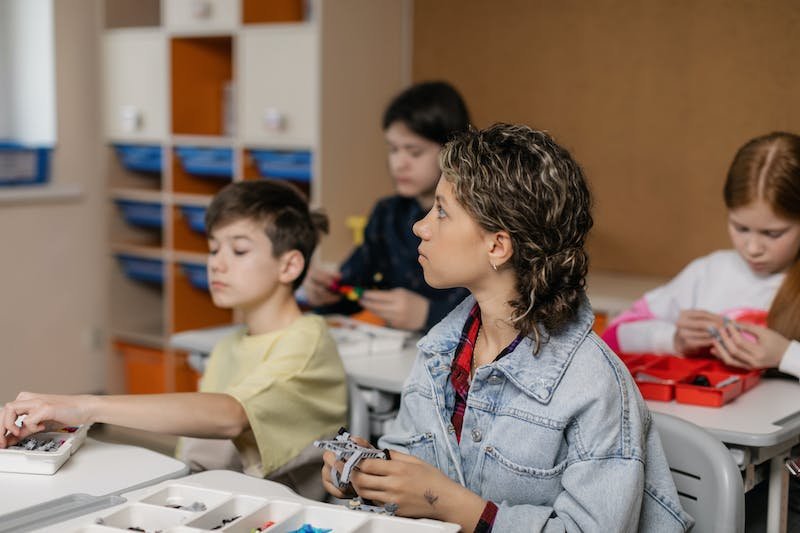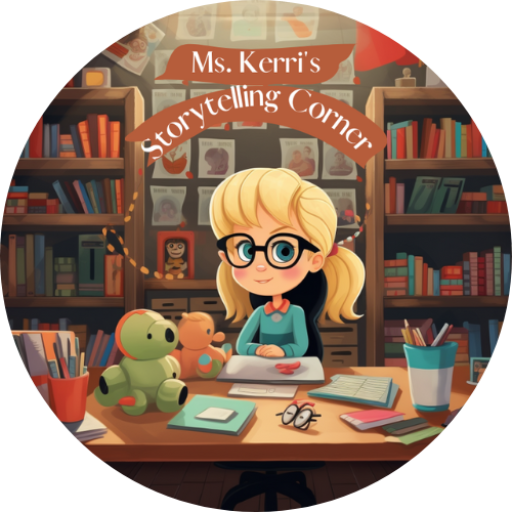
Harnessing the Magic of Read Alouds to Instill Life Lessons
Introduction
Teaching kids important life lessons is a fundamental aspect of their overall development and growth. As parents, educators, and caretakers, it is our responsibility to equip children with the necessary tools to navigate through life’s challenges and become compassionate, resilient individuals. While there are various methods to instill these lessons in young minds, one approach that has proven remarkably effective is through the use of read alouds. The Power of Words: Unleashing Wisdom Through Read AloudsRead alouds hold a unique place in the realm of education as they offer an immersive experience where children can engage with stories on a deeper level. This powerful tool allows them to not only develop their literacy skills but also enables them to grasp complex concepts and important life lessons in an accessible way. Through carefully selected books, read alouds create a safe space for children to explore emotions, learn empathy, and gain valuable insights about themselves and the world around them.
Importance of Teaching Kids Important Life Lessons
Nurturing Hearts & Minds: Shaping Future Generations
In today’s fast-paced world filled with distractions and external influences, teaching kids important life lessons has become more vital than ever before. It goes beyond simply imparting knowledge; it lays the foundation for character development and cultivates essential values that will shape their interactions with others, decisions they make, and ultimately impact their overall well-being. By actively integrating these lessons into their lives from an early age, we empower children to develop crucial skills such as empathy, resilience, kindness, problem-solving abilities, and environmental awareness. These qualities not only contribute to their personal growth but also equip them with the tools necessary to create positive change within their communities.
Power of Read Alouds in Conveying These LessonsUnleashing the Magic: Stories that Speak Volumes
When it comes to effectively conveying important life lessons, read alouds possess a unique power that captivates the hearts and minds of young listeners. The combination of vivid narratives, relatable characters, and thought-provoking themes creates an immersive experience that leaves a lasting impact. Through carefully selected books, read alouds offer children valuable opportunities to connect with characters who face similar challenges and triumph over adversity. By witnessing these journeys of growth and transformation unfold, children can relate their experiences to those of the characters in the stories, thus fostering empathy and understanding. In addition to emotional connections, read alouds also provide a platform for discussing complex topics such as inclusivity, resilience, environmental awareness, and social justice. This interactive approach encourages critical thinking skills as children engage in meaningful conversations about real-world issues.
High-Level Overview: Teaching Kids Important Lessons Through Read Alouds

Definition and Purpose of Read Alouds
When we refer to read alouds, we mean the practice of reading aloud to children, typically in a classroom or at home. This method involves a skilled adult reading a book or story out loud while the children listen and engage with the content. The purpose of read alouds extends beyond simply sharing a story; it aims to provide children with valuable life lessons and enhance their overall development. Read alouds serve as an interactive experience that combines storytelling, language acquisition, and emotional connection. By exposing children to various narratives, characters, and themes through read alouds, they gain exposure to different perspectives and learn about important values. Children are able to explore complex emotions within the safe space of storytelling, helping them develop empathy, understanding, and critical thinking skills.
Benefits of Using Read Alouds as a Teaching Tool for Life Lessons
Using read alouds as a teaching tool for life lessons offers numerous benefits for children’s growth and development. Firstly, it provides an opportunity for adults to model important values such as compassion, respect, honesty, resilience, and environmental awareness through storytelling. As children observe these values in action within the context of stories, they can better grasp their significance in real-life situations. Moreover, read aloud sessions promote active listening skills as children engage with the narrative arc by following along with the plot twists and character developments. This enhanced concentration helps improve their focus and attention span over time. Additionally, read alouds expose children to rich vocabulary that expands their language skills significantly more than if they were solely exposed to simpler texts on their own. Through exposure to diverse literature during read-aloud sessions led by knowledgeable adults or educators who can explain unfamiliar words or concepts when needed; young readers broaden their vocabulary repertoire. The benefits of read alouds extend beyond language and literacy. Research suggests that read aloud activities have a positive impact on children’s cognitive, emotional, and social development. By exploring different perspectives through stories, children gain a deeper understanding of themselves and others. They learn to navigate emotions, develop empathy towards diverse characters and situations, and enhance their social skills by discussing themes or asking questions related to the story content. Additionally, read alouds allow for meaningful interactions between adults and children as they discuss the messages conveyed in the story, fostering stronger relationships and connections. Read alouds serve as a powerful tool for teaching kids important life lessons due to their interactive nature, ability to model values through storytelling, promotion of active listening skills, expansion of vocabulary, cognitive development enhancement, emotional exploration opportunities, social skill building moments while deepening bonds between children and adults.
Niche Subtopic: Developing Empathy and Kindness
Opening Hearts and Minds: Books That Promote Empathy and Kindness in Children
In today’s world, instilling empathy and kindness in children is crucial for fostering compassion, understanding, and a sense of community. One powerful way to cultivate these essential qualities is through carefully selected books that touch the hearts of young readers. By immersing children in stories that showcase diverse perspectives, explore the beauty of differences, and emphasize the importance of empathy, these books provide invaluable lessons that will shape their character. Here are three remarkable works that exemplify this:
1. “Wonder” by R.J Palacio: This modern classic has captivated millions with its profound message of acceptance and understanding. The story revolves around Auggie Pullman, a ten-year-old boy born with facial differences who faces challenges as he enters mainstream school for the first time. Through Auggie’s journey, readers witness the power of empathy as they navigate his experiences alongside him. Palacio’s masterful storytelling encourages children to look beyond superficial appearances and teaches them about the true essence of a person – kindness, resilience, and the longing for acceptance.
2. “The Invisible Boy” by Trudy Ludwig: In this touching tale, Ludwig skillfully explores themes of inclusivity and friendship through the perspective of Brian, a quiet boy who often goes unnoticed by his peers at school. With minimal words but impactful illustrations by Patrice Barton, young readers are prompted to contemplate how small acts of kindness can have significant effects on those who feel invisible or left out. This book not only teaches empathy but also empowers children to become allies – encouraging them to reach out to those who may need a friend.
3. “Each Kindness” by Jacqueline Woodson: Woodson’s beautifully written story shines a poignant light on how every act of kindness counts, no matter how small. Centered around a girl named Maya who faces bullying and exclusion at school, the narrative prompts children to reflect on their own actions and the impact they have on others. The book inspires young readers to consider the consequences of missed opportunities for kindness and encourages them to make choices that foster empathy and compassion.
By immersing children in these compelling stories, educators and parents can nurture empathy, promote understanding of differences, and remind children of the importance of extending kindness to all individuals they encounter. These books serve as powerful tools for fostering a more compassionate future generation – one where empathy is valued as much as academic achievement.
Building Resilience and Perseverance

A Journey of Perseverance: “The Most Magnificent Thing” by Ashley Spires
In the realm of children’s literature, few books capture the essence of perseverance and problem-solving as brilliantly as “The Most Magnificent Thing” by Ashley Spires. This charming tale follows a determined young girl who sets out to create something truly remarkable. However, along her journey, she encounters numerous obstacles and setbacks that test her patience and resolve. Through the protagonist’s unwavering determination, readers are taught the invaluable lesson that success often requires persistence, adaptability, and a willingness to embrace failure as an opportunity for growth. Spires skillfully weaves together relatable emotions and experiences in her story, allowing young readers to empathize with the protagonist’s frustrations. The book emphasizes the significance of perseverance in achieving one’s goals by showcasing how a positive mindset and sheer determination can overcome challenges. It encourages children to stay resilient even when faced with difficulties or discouragement. Furthermore, “The Most Magnificent Thing” underscores the importance of problem-solving skills, teaching children that setbacks are not roadblocks but rather opportunities to find creative solutions. By immersing themselves in this enchanting narrative, children learn that perseverance is not only essential but also rewarding on their path toward personal growth.
Dancing Through Obstacles: “Giraffes Can’t Dance” by Giles Andreae
In a world where individuality is often overshadowed by conformity, Giles Andreae’s “Giraffes Can’t Dance” serves as an uplifting reminder for children to embrace their uniqueness with confidence. Through an endearing cast of characters, including Gerald the giraffe who faces ridicule for his perceived inability to dance gracefully like his peers, this enchanting story beautifully highlights themes of self-acceptance and overcoming obstacles. Andreae’s rhythmic prose and vibrant illustrations captivate young readers, as they follow Gerald’s journey of self-discovery. The book urges children to challenge societal expectations and find the courage to pursue their passions, regardless of what others may think. By witnessing Gerald’s transformation from a self-conscious outsider to a graceful dancer who triumphantly shines on the dance floor, children are encouraged to embrace their own differences and showcase their unique talents without fear or self-doubt. Through this heartwarming narrative, “Giraffes Can’t Dance” instills in children the importance of resilience in the face of adversity and empowers them to overcome obstacles with unwavering determination. Do you want to enhance your read alouds? Click HERE.
Embrace Creativity: “The Dot” by Peter H Reynolds
“The Dot” by Peter H Reynolds is a remarkable book that inspires children to unleash their creativity, cultivate a growth mindset, and view mistakes as opportunities for learning and growth. The story revolves around Vashti, a young girl who believes she lacks artistic talent. However, with the encouragement of her teacher, she embarks on an incredible journey that teaches her the transformative power of embracing her artistic abilities. Reynolds’ eloquent storytelling coupled with his delightful illustrations captivate young readers as they witness Vashti’s journey from self-doubt to self-expression. “The Dot” encourages children to step out of their comfort zones and explore their imagination through art while emphasizing that everyone possesses unique creative abilities waiting to be discovered. By celebrating Vashti’s gradual realization that even a simple dot can hold artistic value, the book conveys an essential message about perseverance, embracing mistakes as stepping stones toward progress, and fostering a growth mindset. These exceptional books offer valuable life lessons on resilience and perseverance for young readers. Whether it is through Ashley Spires’ tale of determination in “The Most Magnificent Thing,” Giles Andreae’s celebration of individuality in “Giraffes Can’t Dance,” or Peter H Reynolds’ exploration of creativity in “The Dot,” these stories provide children with the tools and inspiration to overcome obstacles, embrace their unique qualities, and persist in the face of adversity. Through these heartfelt narratives, children are empowered to develop resilience and perseverance as they navigate life’s challenges, setting a strong foundation for their future endeavors.
Promoting Environmental Awareness
Mother Nature’s Lessons: Books that Raise Awareness about Environmental Issues Among Children
In an increasingly eco-conscious world, it is vital to instill a sense of environmental awareness in children from a young age. Through carefully selected books, we can introduce them to the importance of conserving and protecting our planet. Two exceptional literary works that successfully achieve this goal are “The Lorax” by Dr. Seuss and “One Plastic Bag: Isatou Ceesay and the Recycling Women.” “The Lorax,” written by the beloved Dr. Seuss, tells the tale of a once-thriving land where Truffula trees inhabited by whimsical creatures were relentlessly exploited for their resources. Through a captivating story, Dr. Seuss highlights the consequences of unfettered industrialization on nature and wildlife. The book emphasizes the importance of understanding our collective responsibility to protect our environment and showcases how even small acts can make a significant impact. “One Plastic Bag: Isatou Ceesay and the Recycling Women” is an empowering true story penned by Miranda Paul that takes readers to Gambia, Africa. The book narrates how Isatou Ceesay, along with other women in her community, transformed discarded plastic bags into beautiful handcrafted purses, demonstrating the power of recycling and upcycling materials to reduce waste. This inspiring account not only raises awareness about plastic pollution but also teaches children about resourcefulness and encourages them to find creative solutions to environmental challenges. With these thought-provoking books as tools, parents and educators have an opportunity to cultivate eco-consciousness in young minds while nurturing their love for reading.

Conclusion
Teaching kids important life lessons through read alouds is an invaluable endeavor that can shape their character, empathy, resilience, kindness, and environmental consciousness. By carefully selecting books aligned with these goals, such as the ones highlighted in this article, we can impart crucial values and knowledge to the next generation. As we guide children through captivating stories like “The Lorax” and “One Plastic Bag,” we empower them to become stewards of the Earth, instilling a deep respect for nature and a commitment to sustainable practices. By promoting environmental awareness from an early age, we set them on a path towards making informed choices that will benefit both themselves and future generations. Let us inspire our young readers with these remarkable tales, nurturing their curiosity and fostering a sense of responsibility towards our planet. Together, we can create a brighter future filled with environmentally conscious individuals who strive to protect and preserve our precious natural resources

Ms. Kerri’s Corner provides a exciting virtual space for preschool learning. Through a variety of engaging activities, she exposes young minds to early math, literacy, science and social-emotional skills in a developmentally appropriate way. Centers for blocks, art, books and music allow children to explore hands-on learning at their own pace. Guided lessons subtly introduce number sense, letter sounds and narrative thinking. Careful observation gives insight into each child’s progress across domains. Viewers are also invited to participate, reinforcing that their ideas are valued. By making learning fun yet purposeful, Ms. Kerri lays the groundwork for future academic success while fostering creativity and imagination. Her program offers preschoolers valuable screen-based learning experiences.



